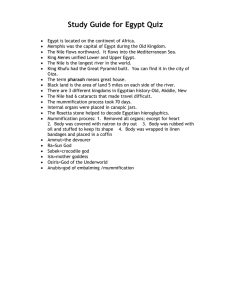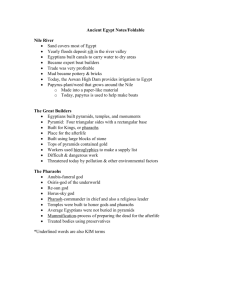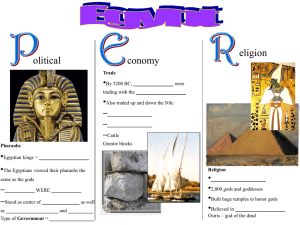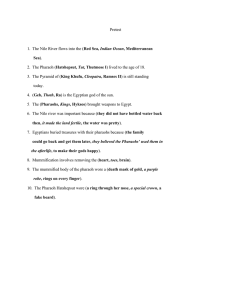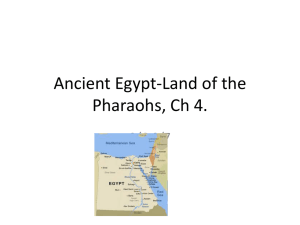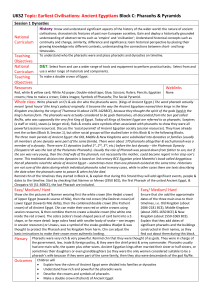Egypt p.11 Warm up: Why were Egypt’s pharaohs unusually powerful rulers?
advertisement
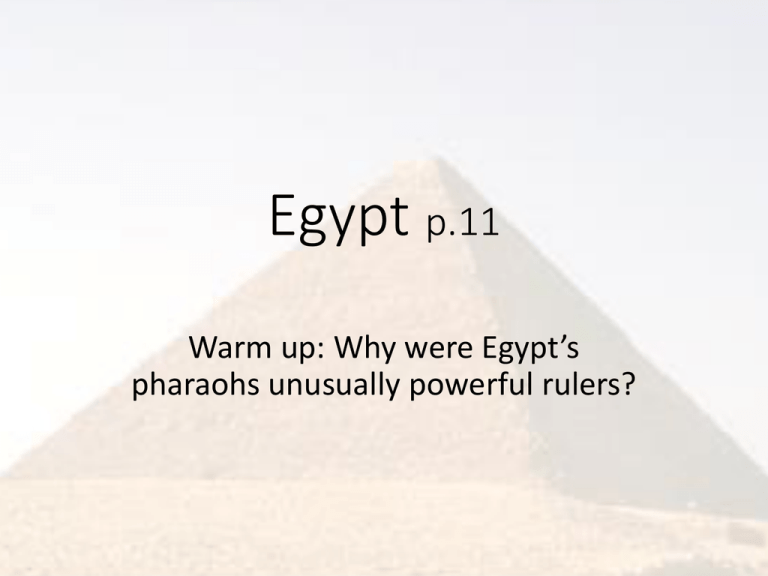
Egypt p.11 Warm up: Why were Egypt’s pharaohs unusually powerful rulers? • Nile River: world's longest river (4,000+ miles), flows north, flooded regularly, provided fertile soil, water, and transportation. • Pharaoh: considered God and King, responsible for all aspects of life. • Menes- pharaoh who unified Egypt • Hatshepsut - female Pharaoh • Tutankbamen - "King Tut," tomb discovered by Howard Carter in 1922, provided historians with many artifacts • Ramses II ("the Great") - ruled nearly 70 years, had many children (99+) • Pyramids: tombs of the Pharaohs, full of valuable items which were often stolen. • 481' high, blocks 21/2-15 tons, 100,000 people for 30 years to build • Built by peasants (for food), not slaves • Mummification: to preserve the body for Ka's (spirit's) journey to the afterlife • Process: Remove organs, dry with natron/salt, stuff body, wrap with linen and amulets (charms). Provide food, drink, everything for afterlife, Book of the Dead. • Hieroglyphics: Egyptian language was untranslated until the Rosetta Stone was discovered. • Jean Francois Champollion broke the code in 1822. • Papyrus: Stalks of reed, soaked, pressed together, written on with ink or paint • Numbers: Needed to calculate taxes • Geometry: Needed to divide parcels of land • Calendar: For planting and harvesting, only off by six hours per year Egypt – Land near the Nile River Pharaohs Leaders of the Egyptians They were like gods Polytheism Main gods were Re (Sun god) & Osiris (god of dead) DividedEgypt was divided into Upper Egypt and Lower Egypt. The Nile was used as transportation between them. One of the Pharaohs would unite Egypt into one. Mummification Part of their religion. It was to prepare your body for the next life. Mostly for royalty. Hieroglyphics Comes from the words Hieros and Gluph. It means sacred carvings. A combination of pictures and an alphabet. PapyrusReeds used to make paper.

